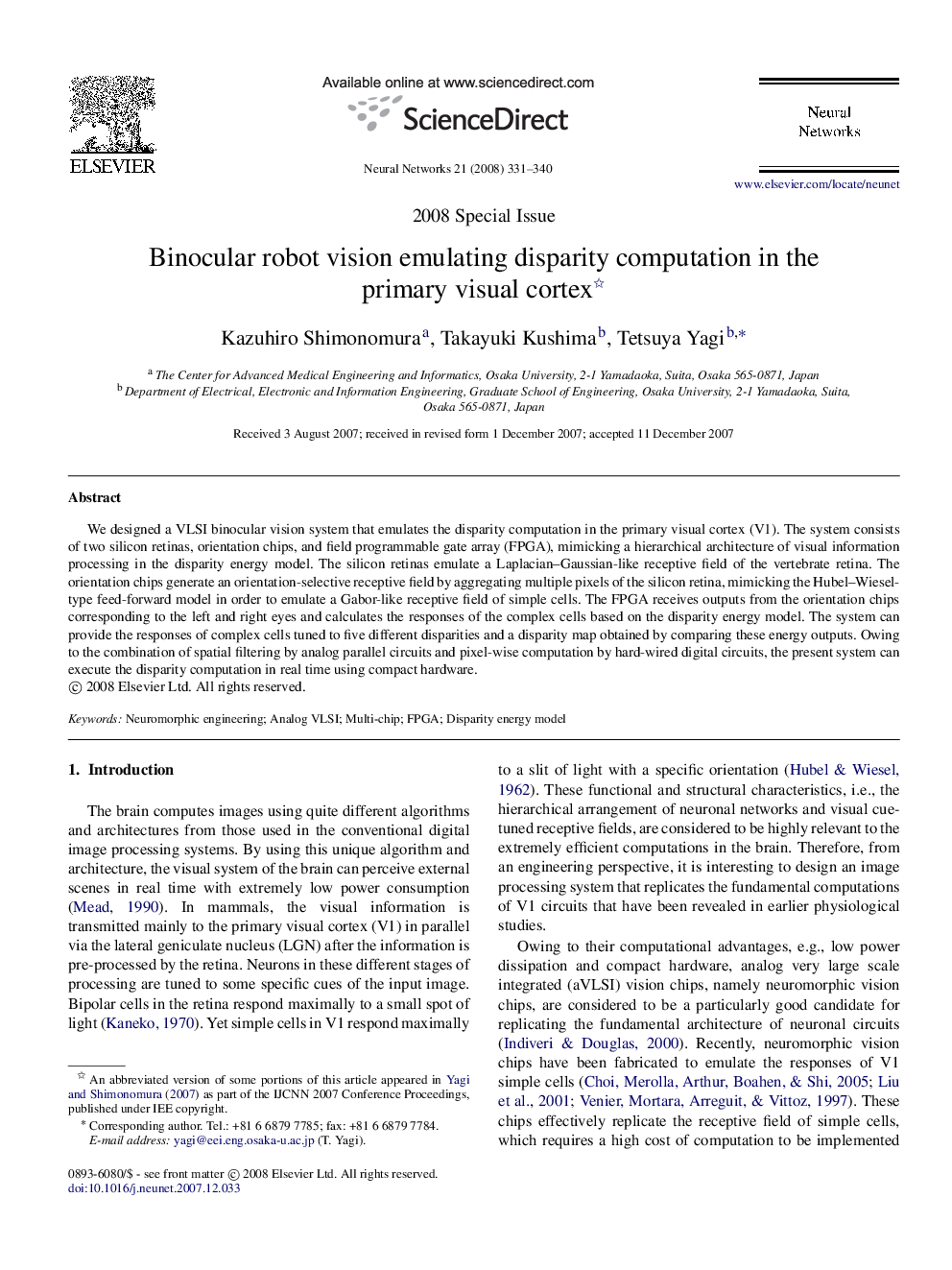| Article ID | Journal | Published Year | Pages | File Type |
|---|---|---|---|---|
| 404675 | Neural Networks | 2008 | 10 Pages |
We designed a VLSI binocular vision system that emulates the disparity computation in the primary visual cortex (V1). The system consists of two silicon retinas, orientation chips, and field programmable gate array (FPGA), mimicking a hierarchical architecture of visual information processing in the disparity energy model. The silicon retinas emulate a Laplacian–Gaussian-like receptive field of the vertebrate retina. The orientation chips generate an orientation-selective receptive field by aggregating multiple pixels of the silicon retina, mimicking the Hubel–Wiesel-type feed-forward model in order to emulate a Gabor-like receptive field of simple cells. The FPGA receives outputs from the orientation chips corresponding to the left and right eyes and calculates the responses of the complex cells based on the disparity energy model. The system can provide the responses of complex cells tuned to five different disparities and a disparity map obtained by comparing these energy outputs. Owing to the combination of spatial filtering by analog parallel circuits and pixel-wise computation by hard-wired digital circuits, the present system can execute the disparity computation in real time using compact hardware.
